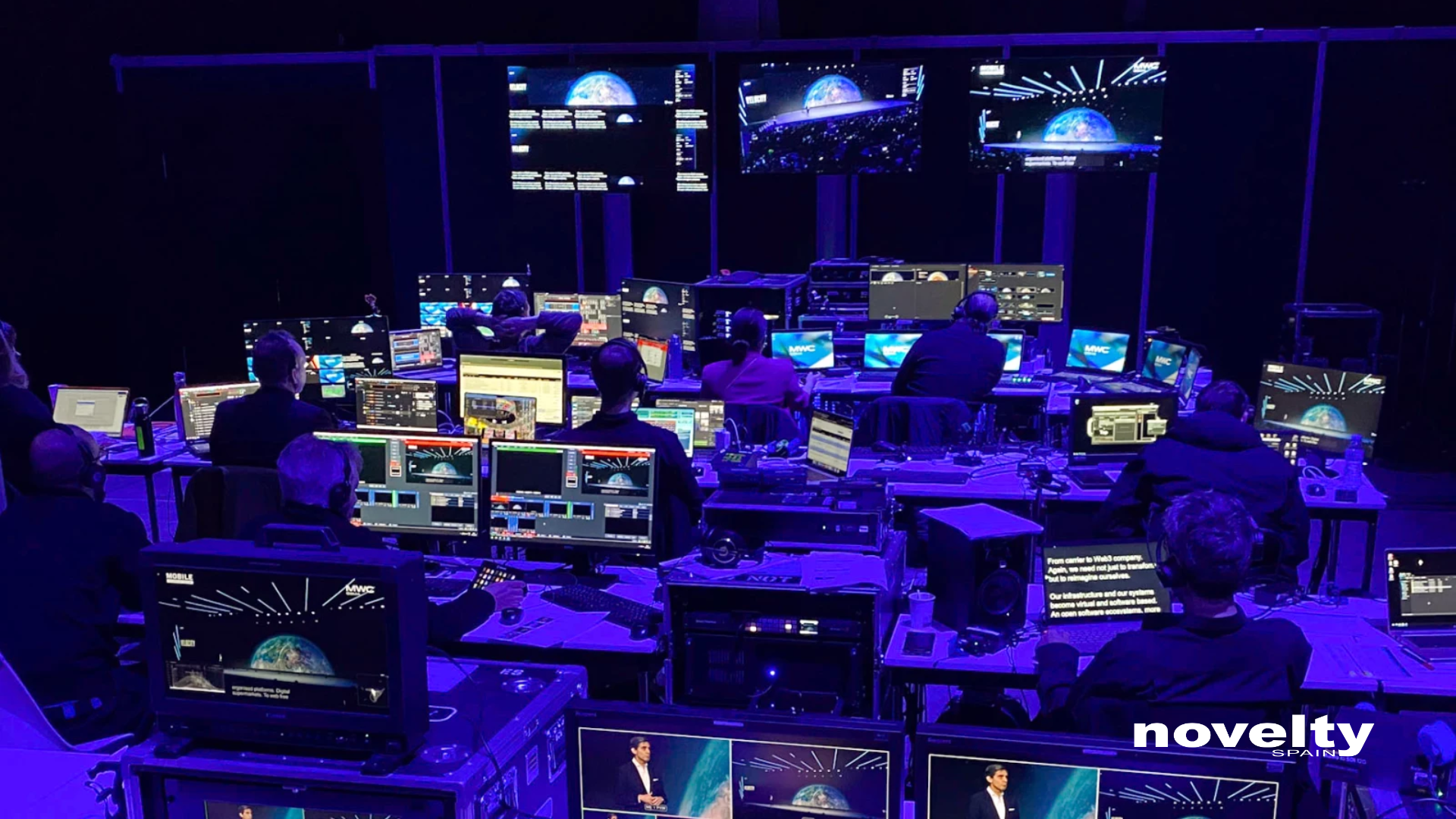Dushow Spain is now Novelty Spain
Live streaming for events: What to keep in mind FOR LIVE AUDIO MANAGEMENT
Streaming for events refers to any process in which the signal is picked up and broadcast to a platform such as YouTube, Twitch, Vimeo, etc., as it uses the Internet as a distribution system.
That said, this article is also applicable to broadcasting, which would have nearly the same definition, except for the distribution platform, which in the case of broadcasting is television.
Many companies and speakers have decided to hold on-line events, and begun to stream themselves live over the Internet. But in addition to that trend, the hybrid events format has come to the fore: hybrid events take place in a venue with a live audience but at the same time are also streamed over the Internet to the entire world.
Streaming events has proven to be a profitable, green way to hold events. So it should come as no surprise that this type of event has become so popular lately. But to hold this type of event, one of the key factors that will be decisive for the event’s success must be under your full control: the audio.
Are you aware of the main differences between audio for face-to-face events and audio for streaming? This article will explain them in detail. Let’s get started!
Picking up the intrinsic sound of the event
To begin with, at a normal event not streamed over the Internet or any platform, what attendees hear is a mixture of what the sound technicians mix live and, remember, the background noise of the room itself: sound reflections, applause and even the audience reactions to anything that happens on stage.
That “noise” is an intrinsic part of the event (what if a speaker took the stage and you couldn’t hear the applause?). That’s why those sounds need to be picked up, processed and broadcast.
Recommended technical equipment
When talking about the recommended equipment, ambient microphones can be used to achieve this mix of sound. These are usually condenser microphones strategically-placed facing the audience to pick up their reactions, and do not pick up that of system speakers as the main sound. A sound engineer will then exclusively mix this signal into the live stream.
Professional engineers
This means that, when it comes to a programme to be broadcast over the Internet you’ll have to add to your budget the cost of a technician who can mix all of this adjacent sound: mixing console, monitors, etc. It is not necessary to double the size of your team, but to add whatever is necessary to offer a sound that is no different from what’s heard live in the room.
Standards for streaming at events
In a live scenario, as we have seen in previous articles such as Streaming of Events, there are certain needs. But beyond these necessities, (such as the addition of ambient microphones), in streaming or even broadcasting of events there are also unique rules based on streaming or broadcast standards such as those of the EBU (European Broadcasting Union).
These standards, or special rules, are meant to standardise the high-quality playing capacity of single audiovisual programmes on different media, such as a PC, but also a compact smartphone or state-of-the-art television.
These standards must be met for the sound content to be as similar as possible to what the technician doing the mixing is hearing, either with their high-performance Genelec monitors, or listening with a simple telephone as a reference. The results of not doing so can range from something as simple as hearing poorly, to not hearing the streaming audio at all.
Professional engineers
The technical requisites to reproduce voice in the speaker set of a room can be diametrically opposed to those required to install a sound system (mix) at the same event for streaming. They are so different that using different technicians or even discrete audio control units is never a bad idea.
Recommended technical equipment
There are plug-and-play solutions on the market that “normalise” these values to any standard, but they operate more as a final aid than a simple independent mixing system.
Remember!
If you don’t pay any attention to these standards (that may be different for every available platform), it’s likely that an automatic program can adjust the audio signal to comply with them. But often, if the changes are sensitive, the end results can have a negative impact on the course of your event.
We hope that this article has helped you to know more about the items to bear in mind for managing the audio at your live events. If you’ve found it useful, please make sure to visit our blog to never miss out on any essential content on the technical production and organisation of face-to-face, hybrid and virtual events.
This article was first published in Novelty Spain, you can read the original Spanish version here.





